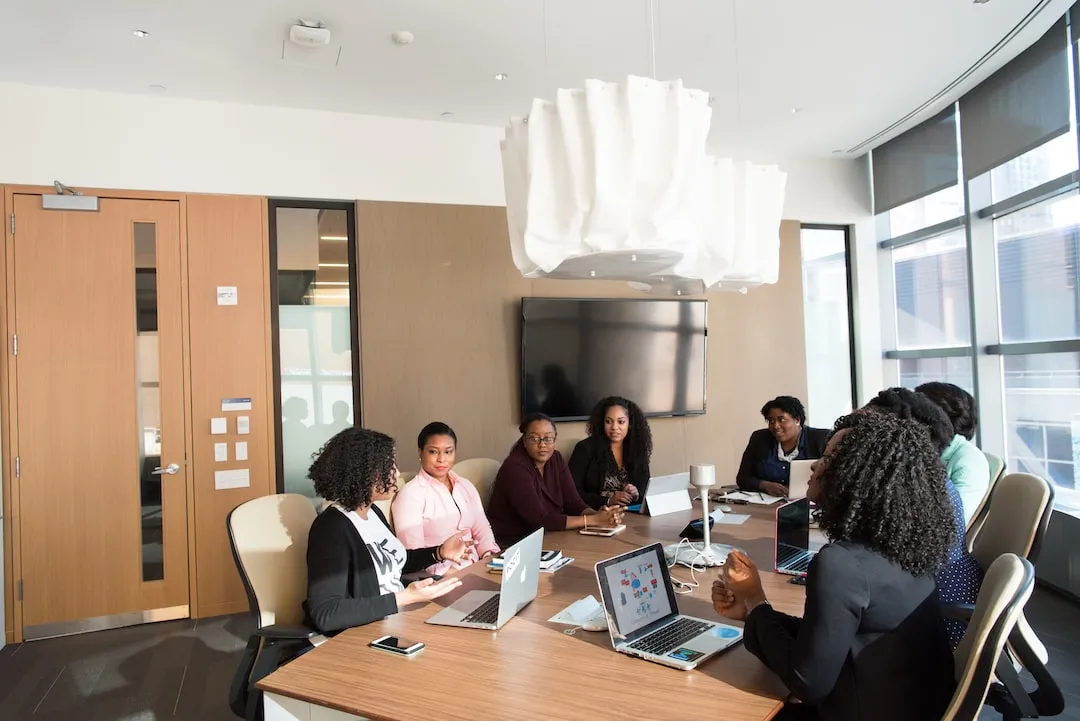Battling Burnout: HR’s Approach to Preventing Mental Health Challenges
To shed light on proactive measures against workforce burnout, we asked ten professionals, including a wellness expert and an HR manager, to share their strategies. From adopting a holistic wellness and self-care approach to promoting open dialogue and understanding, these experts provide valuable insights into maintaining mental health in the workplace.
- Adopt a Holistic Wellness and Self-Care Approach
- Hold In-House Workshops for Mental Health
- Recruit for Resilience
- Use a Nutritional Approach to Burnout
- Provide Paid Mental Health Days
- Implement a Comprehensive Well-Being Program
- Recognize and Address Burnout Signs
- Actively Listen to Employee Concerns
- Establish Strict Work-Time Boundaries
- Promote Open Dialogue and Understanding
Adopt a Holistic Wellness and Self-Care Approach
Over the years, countless individuals have embarked on wellness journeys that led to frustrating cycles of physical and emotional highs and lows. Throw in the stress that work can bring, and burnout is inevitable.
As the leader of the Adrien Cotton
Wellness team, a holistic, person-first approach was the best way to support the workforce. Each spoke of the Wellness Wheel (sleep, stress resilience, food as fuel, quality movement, and calendar management) is reinforced and promoted to everyone in the professional and personal world.
Beyond the spokes of the Wellness Wheel, proactive and consistent self-care routines are seriously encouraged. The team’s adherence to their self-care practices is more important than meeting another deadline. In fact, when a routine that puts oneself at the center is created, better work is produced, there is more clarity in projects, and a sense of calm and confidence is exuded in all aspects.
Adrien Cotton, Founder and Wellness Expert, Adrien Cotton
Hold In-House Workshops for Mental Health
As the founder of a life-coaching company, I understand the risk of burnout, even among experts.
To protect our team, we’ve created in-house workshops using the expertise of our own coaches. These sessions focus on stress management, emotional intelligence, work-life balance, and other key mental health topics.
By running these workshops for our team, we provide them with customized techniques to manage their own well-being. This proactive approach helps prevent burnout and also enhances our coaching approach, ensuring our clients receive the best guidance.
 Bayu Prihandito
Bayu Prihandito
Certified Psychology Expert, Life Coach, Founder, Life Architekture
Recruit for Resilience
One common theme among organizations that take burnout seriously is that they all recruit specifically for resilience.
Burnout and other stress-related health issues are both dispositional and contextual, meaning that, unfortunately, some people are inherently prone to burnout.
Several personality traits and behavioral constructs are deeply connected to burnout and adverse stress-related health issues, which can easily be screened before hiring. Although organizations do have a moral responsibility to minimize stress and pressure placed on employees, some roles are inherently more stressful than others, and organizations also have a responsibility to avoid placing vulnerable people into those positions.
Consequently, when we started screening specifically for resilience, the incidence of burnout dropped rapidly in new cohorts, and the results more than speak for themselves.
 Ben Schwencke
Ben Schwencke
Business Psychologist,
Use a Nutritional Approach to Burnout
The most beneficial habit is to enhance food selection. I recommend consuming nine servings of fresh, organic fruit and vegetables daily, along with including adaptogenic foods such as mushrooms and ginger to boost mood, mental clarity, immunity, and stress response.
Aim to include all colors of the rainbow in your diet daily, if possible. Herbal teas, such as peppermint for mood, lemongrass for calmness, and green tea for focus are also beneficial. Limiting sugar, alcohol, and processed foods can help reduce inflammation and fatigue while stabilizing blood sugar.
 Kim Ross, MS, RD, CDN
Kim Ross, MS, RD, CDN
Integrative Nutritionist, Kim Ross Nutrition
Provide Paid Mental Health Days
The most important step in beginning conversations around mental health is to offer paid mental health days to staff.
You cannot reasonably expect anyone to raise mental health issues with their employer unless there is a formal structure in place to support them. Without paid mental health days, struggling employees simply won’t see the point in highlighting their concerns and are likely instead to feign other issues to get time off.
Paid mental health days also highlight to employees that the organization takes mental health seriously, helping to dispel the stigma. This ensures that staff feel comfortable talking about these issues, helping to address problems early.
Last, and most simply, if an employee asks for a mental health day, this literally represents the initiation of a mental health conversation, serving as an essential springboard for further support.
 Chloe Yarwood
Chloe Yarwood
HR Manager, Test Partnership Test Partnership
Implement a Comprehensive Well-Being Program
In our organization, we proactively address burnout by implementing a holistic well-being program focused on both professional and personal growth. We prioritize regular check-ins, where employees discuss workload, share concerns, and seek support.
Flexibility in working hours and remote work options ensures a balance between work and personal life. We also provide access to mental health resources, including counseling services, workshops, and mindfulness sessions. Regular breaks throughout the day are encouraged, and there’s an emphasis on taking time off to recharge.
Additionally, ongoing training ensures managers can recognize early signs of burnout and are equipped to offer support. By fostering an environment of openness, support, and understanding, we ensure our team’s mental well-being, consequently driving higher engagement and productivity.
 Nilou Esmaeilpour
Nilou Esmaeilpour
Clinical Director and Registered Clinical Counselor, Lotus Therapy
Recognize and Address Burnout Signs
As someone who works ninety hours nearly every week, burnout is a constant struggle. Experiencing it myself, I’ve learned to recognize it in my team, and I intimately know the importance of helping prevent it.
In keeping burnout mitigated, it is first important to recognize it. Watch for drops in performance, changes in attitude, or unwarranted frustration. Second, figure out what each person needs as relief. Not everyone wants time off; sometimes, they just need a change.
Maybe a call-taker needs to help catch up on some paperwork somewhere else? Maybe a field tech could help with warehouse inventory for a day? Third, ask. Don’t think you always have to recognize and solve the problem and shove a solution down their throat. Check in with your team and ask how they’re doing.
 Christopher Olson
Christopher Olson
CFO, Surfside Services
Actively Listen to Employee Concerns
To effectively combat burnout and mitigate mental health issues in my workforce, one of the key measures I have taken is actively listening to my employees. This means providing employees with a safe space where they can share their feelings, experiences, and thoughts without fear of judgment or repercussions.
By doing so, it not only allows me to identify any potential sources of burnout, but also allows me to address them in a timely manner before they become too overwhelming.
 Keith Sant
Keith Sant
CMO, Eazy House Sale
Establish Strict Work-Time Boundaries
A lack of set time boundaries is one of the biggest challenges for employees, contributing to a poor workplace culture overall. Sometimes, employers send emails or call their employees for tasks with a deadline.
Even if they do not insist employees complete these tasks immediately after their regular work hours, getting contacted during non-working hours can cause workers undue stress. They can even experience burnout as they lose the motivation to work for a company they believe does not respect their time. Strict work-time boundaries have been established for our team.
After our workers clock out, they are only obligated to reply to work-related communication once they log back in the next day. This includes time-offs that all our workers can take after informing their direct superiors. Of course, everyone must ensure they complete all assigned tasks on time first.
 Loretta Kilday
Loretta Kilday
DebtCC Spokesperson, Debt Consolidation Care
Promote Open Dialogue and Understanding
It is established that there is a trend of toxic productivity: being excessively productive is promoted in social media, and society pushes everyone to reach some kind of “success.”
Moreover, during this time of massive layoffs, employees become more and more afraid of showing any weakness to their employers. This happens when the dialogue inside the company is not open and honest: employees do not know what will be the response to their needs and fear that it will be a negative one.
When a company cherishes its employees, their needs are accounted for. There is no risk in coming to the team leader with a request for a shorter work week or an additional vacation. If employees suffer from burnout, they become a lot less productive, so it is only reasonable to give them time to deal with their problems.
The foundation of such dialogue is laid during the recruitment process via open and detailed feedback and is cultivated daily by providing advice, help, praise, and non-work-related conversation.
 Daria Erina
Daria Erina
Managing Director, Linked Helper
Submit Your Answer
Would you like to submit an alternate answer to the question, “Can you share an example of how you’ve proactively addressed burnout to prevent mental health challenges among your workforce?”

